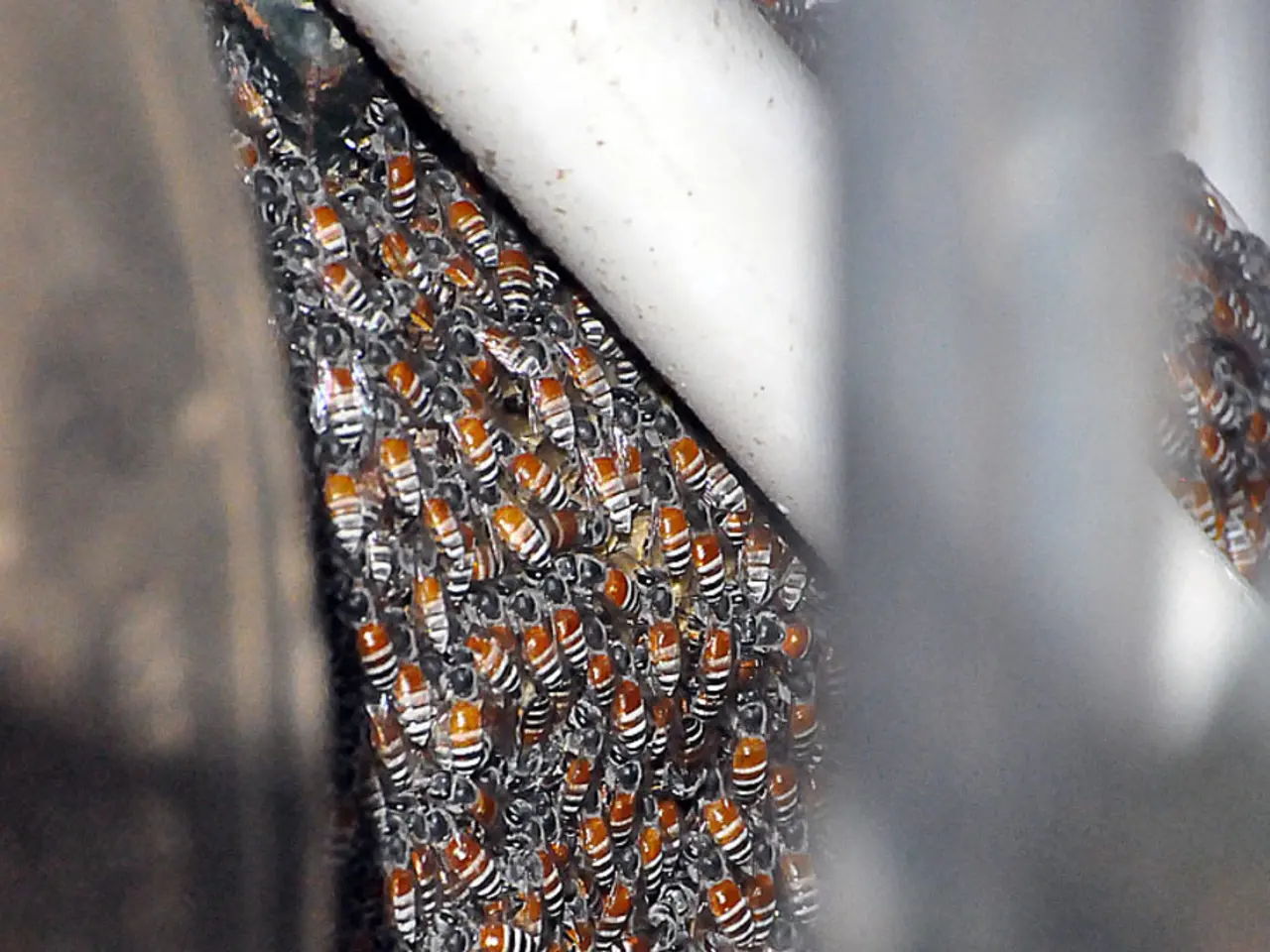Stinging Wasps and Their Relief: Soothing the Agony
In the unfortunate event of a bee or wasp sting, knowing the right steps to take can help alleviate the discomfort and prevent potential complications. Here are some effective home remedies, as well as those that are best avoided, based on advice from health professionals and the Health Knowledge Foundation.
First and foremost, it's crucial to remove the stinger if it's still in the skin. This can be done by gently scraping it off with a plastic card or the edge of a fingernail, taking care not to squeeze the skin. After removing the stinger, clean the area with soap and water to prevent infection.
Immediately cooling the sting site with ice cubes or cold water can help inhibit inflammation and alleviate the symptoms caused by the venom, such as swelling and pain. A cold pack wrapped in a cloth can be applied for 10 to 20 minutes.
Some other helpful remedies include:
- Baking soda paste, which neutralizes venom acidity and reduces itching and swelling.
- Aloe vera or witch hazel, which soothe skin irritation and reduce inflammation.
- Calamine lotion, hydrocortisone cream, or oral antihistamines can ease itching and allergic reactions.
However, it's important to note that less conventional remedies like saliva and onions should be used with caution. Saliva, while traditionally used in some cultures, can introduce bacteria and increase the risk of infection. Onions, while they have some traditional use in folklore, lack strong scientific evidence or clinical recommendation for bee or wasp stings in recent trusted sources. Onions, like saliva, can cause skin irritation if left on the skin for too long due to their acidic content.
It's also worth mentioning that leaving onion slices on the skin for 24 hours is not recommended due to the risk of skin irritation.
In cases of suspected allergic shock from an insect sting, it's essential to call the emergency number 112. Symptoms of a severe allergic reaction (anaphylaxis) include difficulty breathing or swallowing, swelling of face, lips, tongue, or throat, widespread hives or rash, dizziness, weakness, loss of consciousness, nausea or vomiting.
If a bee or wasp sting occurs in the mouth or throat, suck on ice or ice cubes and apply a cold compress to the neck until help arrives. Swelling of the mucous membranes and tongue can cause breathing difficulties.
The Health Knowledge Foundation advises that a bee or wasp sting can become an emergency if it occurs in the mouth or throat or if there's suspicion of an allergic shock. In such cases, seek immediate medical attention.
In summary, start with removing the stinger, clean the area, apply ice, and use anti-inflammatory topical or oral remedies. Avoid unproven home remedies like saliva, and watch closely for serious allergic signs to get urgent care. If symptoms of a severe allergic reaction occur, seek immediate medical attention.
- The field of science offers various effective home remedies for bee and wasp stings, such as baking soda paste, aloe vera, witch hazel, calamine lotion, and hydrocortisone cream, which can help reduce itching, swelling, and inflammation.
- Skin-care products like cold water or ice cubes can inhibit inflammation and alleviate symptoms like swelling and pain when applied to the sting site.
- Mental-health issues may arise from severe allergic reactions to insect stings, as symptoms like dizziness, weakness, and loss of consciousness can be emotionally distressing. Therapies-and-treatments, such as counseling or medication, might be necessary to cope with such stressors.




